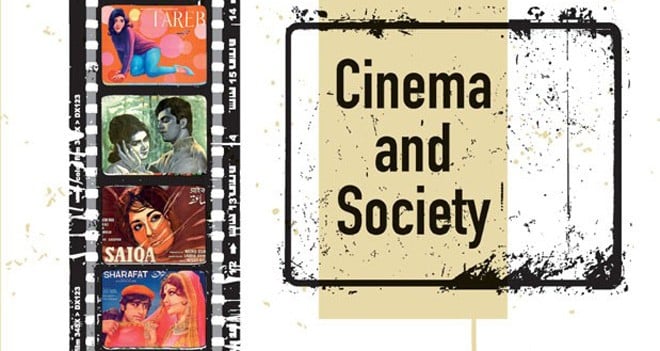
A review of the first academic volume on Pakistani cinema

The question of national cinema is debatable but for the editors of the book, the idea of a "national trauma" can lie at the heart of a collective memory useful in designating the national cinema. For them, partition with all its upheavals could be made a starting point for the study of national cinema in the Pakistani context, the way the revolution in 1917 ushered in the Soviet Cinema, the Iran-Iraq war for Iranian cinema, and "nakba" (translated as catastrophe) as the beginning of Palestinian cinema.
This book could be considered as the first academic volume on Pakistani cinema as the objective was to understand Pakistani visual culture in relation to social issues.
A combination of deeply-informed academic writings, literary and journalistic essays restore the social roots and the cultural flowering of a nation too often denied its enduring concerns with aesthetics. In Pakistan, where the focus has always been on high politics and security issues, this can be seen as a parallel narrative of the related aspects of popular culture, enriched by diversification of topics with texts and primary sources to include films as well. The authors, thus, had to capture a larger picture through their lense to make a contribution towards not only visual culture but also defining its relationship to anthropology, sociology, urban studies and history.
Cinema -- as the founder of subcontinent’s cinema, Dadasaheb Phalke noted -- was about revealing rather than concealing, and its "pardah" -- the screen -- was an important reflection of the society in which it was being produced. While in India, despite the diatribe of Gandhi "cinema being sinful technology", it shook off the perception and reality of its association with subterranean sin industries and financial irregularity to go through a process of gentrification which saw the global rebranding of Indian films.
In Pakistan, however, cinema was shunted from the mainstream to the margins, attending to provincial audiences as never before. Its style and audiences became less aligned with the dominant global forms. The specificity of cine sexuality in the Pakistani context came to be defined by just how crudely directors set out to lay bare its contents. This makes sense as the nation obsessed with projecting its purity can boast the smuttiest onscreen choreography south of the Himalayas.
The demise of celluloid social dramas and with the transition from the likes of Waheed Murad to Sultan Rahi represented a fundamental shift in cinema’s relationship with society. Cinema had started to signal ethnic, social and political difference in Pakistan whose officials had always been obsessed with homogeneity.
In a way, it could be said that this was the briefest history of cinema from a sociological angle in the country.
Sadly, there is hardly anything that is original and meant only for this edition. Many of the articles have been published earlier, like the abridged edition of Mushtaq Gazdar’s book on the subject, which is the only book of its kind in English. Similarly, the articles by Manto on "Purisrar Neena" too form part of the text and as do articles by Ziauddin Sardar (beautifully written on the impact cinema had on the lives of people especially youngsters at the time when he was growing up).
Actually, all these articles by Kamran Asdar Ali, Musharaf Ali Farooqi, Iftikhar Dadi, Hashim Bin Rashid, Sher Khan have been collected with this one intent of establishing the relationship of cinema with society.
To many, this one-to-one relationship could be seen as a barometer of change in society as reflected in cinema. Perhaps, too little attention has been paid to the mediated role of cinema as a form of art. Art does not passively reflect society but adds its own value and can stand alone if done aesthetically. Autonomy of art drives its own logic and necessitates its own understanding. Whether the Pakistani cinema is not well-developed for it not to have the autonomy that art desired is probably the reason why it is just seen as a mirror of society and nothing more.
Life can only imitate art if the latter is done well.